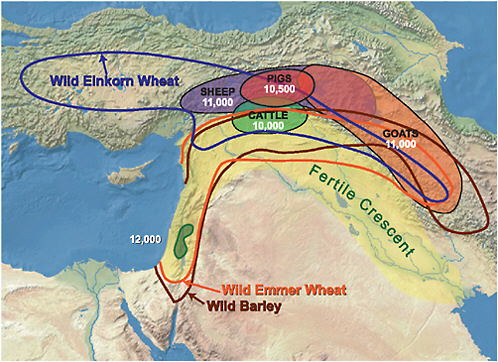Prove me wrong-
Yamnaya pottery is stratified above Repin, and their kurgans are in the same region.Hajji Firuz pottery is a completely different style-another early center of wine production, not found at Repin sites. Grapes need a certain environment to grow, deserts are not known for growing grapes.
Alcohol consumption went up in the Americas speaking Indigenous people[including Eskimoo]; after the arrival of European peoples.
Some groups/tribes who have come in contact with Indo-European speaking people adopted their use/language of the wheel. For example can you give the name of wheel in the following Afar, Amhara, Anlo-Ewe, Ashanti, Bakongo, Bambara, Bemba ?
Or can you show an example [archeological predating Maykop/Maykop Steppe] ancient wheel artifact from the Proto-Canaanites-Proto Siniatic script/Phonecians, who styled the earliest known alphabet symbol "Teth" to mean/designate a wheel.
You're the ones asserting this ridiculous "hypothesis". When you do so it's incumbent on
you to provide the proof, to wit,
where is the proof that the steppe peoples grew grapes/wine or made beer before it was already being consumed in the Near East and in other farmer areas? If you don't have any such proof then it's a non starter.
I also have no idea what you're talking about with regard to "
DESERTS". You still don't know that farming began in the
FERTILE CRESCENT of the Near East? There are deserts in parts of it, but parts of it were very fertile indeed once upon a time. The Levant, home of the Natufians and the place where wheat grains were first collected on a mass scale for use as food was, according to Hawks, a paradise of plants and animals. We know grapes were grown in Georgia. You think either of those places were deserts? Do you really need to have all the papers posted again that show how early wheat was domesticated and turned into beer? Ygorcs has already alluded to it.
It was the steppe where you can find evidence of farming only in a few river valleys. It was the steppe which came to farming
LATE. How could they make alcohol if they didn't farm? That's why the steppe came to settled life and metallurgy so late as well. Why on earth do you think they were first fisher-hunter-gatherers living in yurts, and then, only after contact with the farming communities in the Balkans and the Caucasus learned to farm a little, but mainly became pastoralists? That's why the farming vocabulary even in the Indo-European languages is a substrate from farming languages.
The steppe peoples didn't take everything from the advanced societies of the lands to their south. They also borrowed heavily from the communities of "Old Europe" to their west. The first grains seem to be from there, also the first copper, both in the form of imported copper goods and later the raw copper from which they produced crude artifacts by copying Balkan styles. Cattle seem to have been imported from the Balkans, but sheep and goats may have come not only from there but also from the Caucasus. Bronze making seems to have been learned from Maykop. The Corded Ware people barely had copper. Bronze appeared much later in Europe. IF the Hittites were the first to produce iron it's only because they absorbed the skilled metallurgists who had been experimenting with metals for millennia in the region before the Hittites appeared to history.
Kurgans are on both sides of the Caucasus from very early periods. We may never know where the absolutely first one was built, but it was a common burial form across that region. I also fail to see that it's such a big deal. What benefit is there to a kurgan versus any other form of burial? The only reason it's important is to corroborate gene flow, which is the most important thing. The wheel is indeed a big deal, but it can be found in Old Europe and the Near East before it is found on the steppe, at least from the latest dating. It was smart to adapt it and the carts it pulled for the most efficient use of their environment.
The domestication of the horse seems to be the only
sure "original" contribution to the IE package by the steppe peoples.
I don't know why this is such a tragedy. The Japanese are very good at absorbing, adapting, and benefiting from the technology of others too. No one holds it against them. There's something to be said for adaptability.
We're all tired of pointing out the same things over and over again and posting links to papers which you apparently don't read. Use the darn search engine and they'll turn up again and again and
read them, or use google.
There is a whole body of literature about tolerance for alcohol. Those peoples who have practiced agriculture the longest and therefore were exposed to alcohol the longest are the best at dealing with it, i.e. they aren't as likely to become alcoholics. It's selection at work. If anyone thinks that men who are falling down, rolling around the floor drunk half the time, and puking their guts up the other half of the time make good warriors, he needs his head examined. That was one of the things that destroyed the North American Indians, because they rapidly became addicted to it, losing in battles and losing their pride and dignity at the same time. Since the steppe people weren't farmers and thus wouldn't have been making alcohol, it's probable they also had no tolerance for alcohol. So, it was probably a detriment to them as well, but they had climate change, population crashes, and the plague to help them. Plus, as luck would have it for them, a pastoral economy, even if it was learned from people west of them, as there is some indication is the case, was a better option for survival in the changed conditions in Central Europe.



